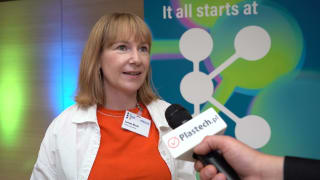
As consumers and future employees, generations Y and Z are the target of marketing and recruiting initiatives by the packaging sector. But where and how do you reach out to this generation?
Marketing experts and recruiters are eyeing the generation of young people born after 1995 with great interest. Known as generation Z or digital natives, they succeed the previous generation of millennials (or generation Y), who have now reached adulthood and are of interest to the packaging industry both as the next generation of leaders and as customers with money to spend. What both these generations have in common is that they have grown up with digital media and the internet. In their private and professional lives, generations Y and Z seek personal fulfilment, expect authenticity, and attach great importance to ecologically sustainable behaviour on the part of brands and potential employers alike.
Their natural affinity with a wide range of media helps digital natives to exploit new research options, making online searches a natural part of their information-gathering process. Companies that want to engage with them therefore need to have a presence on various channels and be well-versed in their use.
Discriminating consumers
Generation Z and millennials are distinguished by their comprehensive understanding of technology and media. They seek information about products and companies primarily online and are inspired to make purchases on social media. New forms of advertising therefore need to be used to attract the attention of representatives of generation YZ. The marketing strategies that a company deploys should focus on social media platforms like YouTube or Instagram, which are an integral part of the lives of this generation.
Young people decide within a matter of seconds whether content is relevant to them or not. This means that advertising needs to be memorable and convincing. However, this also means that packaging design can embrace totally new approaches to interaction. Linking packaging with interactive features to online content has proven popular and allows companies to win over young consumers with stories about the product. Marketing experts call this storytelling.
This can be done on packaging using a QR code, for example. Scanning this code with a mobile phone takes the consumer to a website, social media profile or video. Connecting real products with digital media makes packaging an important intermediary for appealing to young consumers. Of course, it is then also important to meet their demands for authenticity and transparency and to design the linked information accordingly. Some of the presentations by experts in the Packbox and Techbox forums at Fachpack in September will explore how packaging can function as an interactive communicator.
However, its affinity with digital media is not the only character trait typical of the younger generation. Packaging companies should be aware that the “Fridays for Future” movement originated in generation Z. And this is also reflected in their purchasing decisions.
“Generation Z embraces a healthy lifestyle and cannot imagine a life without smartphones. These young people have high expectations, so products and services need to be fast, intuitive, entertaining and sustainable,” says Dr Christian Wulff, Leader Retail and Consumer at PwC Germany. PwC conducted a survey to take a closer look at generation Z and found that it tries to avoid plastic (37 percent) and buys products with as little packaging as possible (35 percent). In addition, 52 percent are willing to pay more for organic products, while just under half (47 percent) would be prepared to spend more on sustainably packaged, eco-friendly food.
But even 18-24-year-olds still like to shop in bricks and mortar stores. In fact, they visit traditional retailers more often than any other age group: 59 percent of generation Z respondents stated that they shopped in physical stores at least once a week.
Recruitment in the digital era
Potential recruits apply the same standards to their choice of future employer as they do to their consumption. This means that their work doesn’t just have to be a way of earning a living, it also needs to be meaningful and sustainable. Generations Y and Z can only be enticed to a limited extent with promises of company cars and financial benefits alone. To find out whether their own aspirations are compatible with a company’s goals they head to the company’s website and look at its ratings on employer review platforms or social media. This means that recruiting departments need to be well positioned in the digital environment to attract notice and to be able to help shape the company’s image. Communications agency B+P Communications, which represents some major companies from the packaging sector, has written an article that also confirms that millennials and generation Z favour companies whose culture coincides with their own values and aspirations. According to B+P, millennials and generation Z have a strong need for authenticity in the workplace. Together with corporate culture, this aspect has become synonymous with a company’s employer brand.
However, job advertisements, a website and Facebook profile alone are not enough to get visibility for an employer brand. As well as using traditional platforms like Xing or LinkedIn, therefore, recruiting consultants Vesterling are increasingly also having to conduct targeted searches on social networks and sourcing platforms like Talential, Talentwunder or Talentbin.
The good news for companies in the packaging sector is that a successful recruitment of generation ZY means that your company is also gaining the right kind of talent capable of reaching out to customers from this generation.


